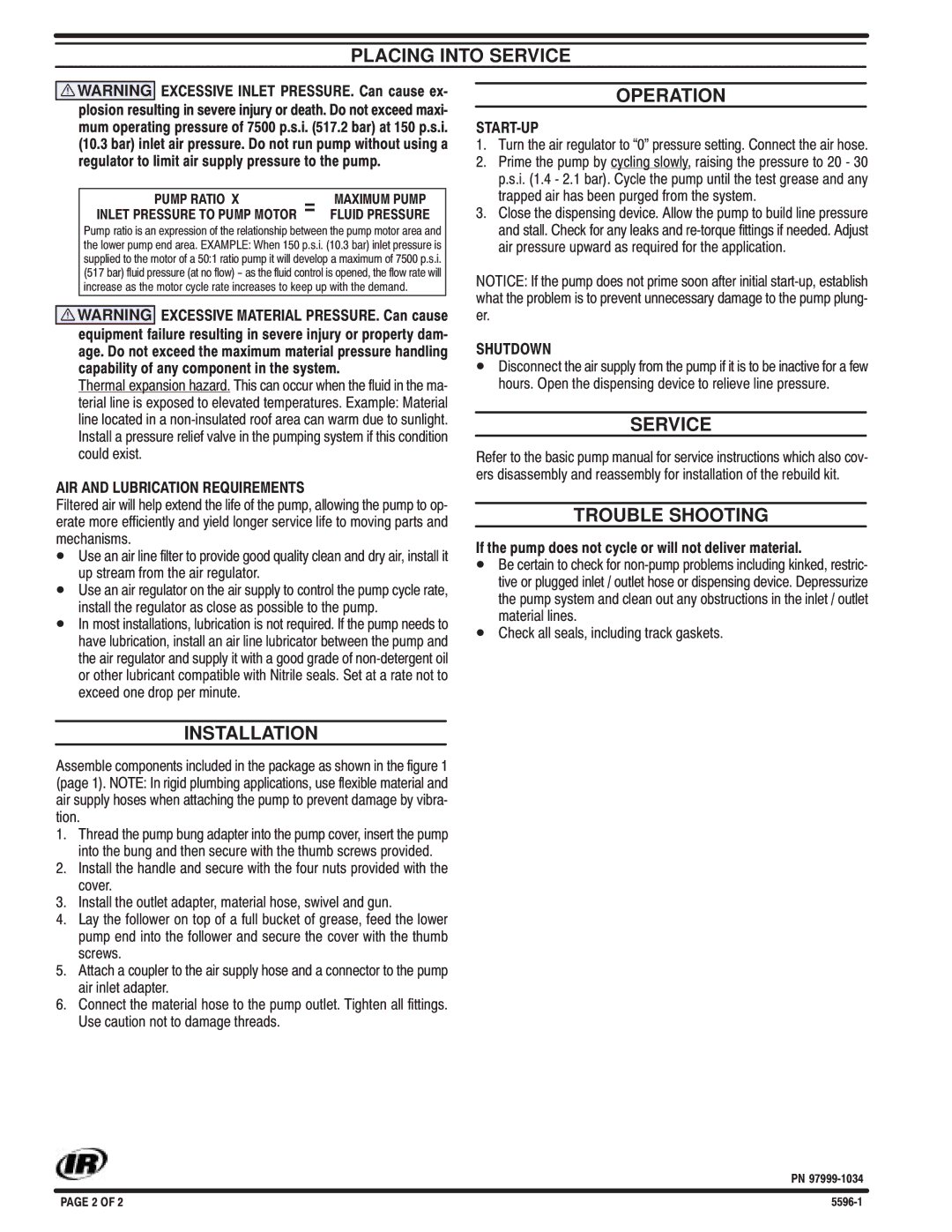5596-1 specifications
The Ingersoll-Rand 5596-1 is a versatile, powerful air compressor designed for a wide range of applications in various industries. Known for its reliability and efficiency, this model has gained popularity among professionals and businesses that demand high performance and durability from their equipment.One of the standout features of the Ingersoll-Rand 5596-1 is its robust motor, which delivers significant horsepower for exceptional air output. This compressor is equipped with a high-capacity air tank that allows for extended run times without the need for constant cycling, ensuring a steady supply of compressed air even during peak demand. Its efficient design minimizes energy consumption while maximizing air delivery, making it an environmentally friendly option for users.
The Ingersoll-Rand 5596-1 also incorporates advanced technologies such as an integrated control panel, which allows users to monitor and adjust settings with ease. This user-friendly interface provides real-time data on pressure levels and operational status, improving overall efficiency and safety during use. Additionally, the compressor features automatic shut-off capabilities, preventing overheating and potential damage during prolonged operation.
Durability is another key characteristic of the 5596-1. Built with high-quality materials, this air compressor is designed to withstand the rigors of demanding work environments. Its rugged construction and reliable components contribute to its longevity, reducing the need for frequent repairs or replacements. Furthermore, the compressor is equipped with noise-reduction features, making it suitable for use in noise-sensitive areas.
Portability is a critical aspect of the Ingersoll-Rand 5596-1, as it is designed with mobility in mind. The compressor comes with sturdy wheels and a lightweight frame, enabling users to transport it easily from one job site to another. This convenience makes it an ideal choice for contractors and maintenance personnel who require a reliable air compressor that can keep pace with their work demands.
Overall, the Ingersoll-Rand 5596-1 stands out due to its powerful performance, user-friendly technology, durability, and portability. Whether used for powering pneumatic tools, inflating tires, or other compressed air applications, this air compressor is a dependable solution that meets the needs of a diverse range of industries. With Ingersoll-Rand's commitment to quality and innovation, the 5596-1 remains a top choice among air compressor users.

